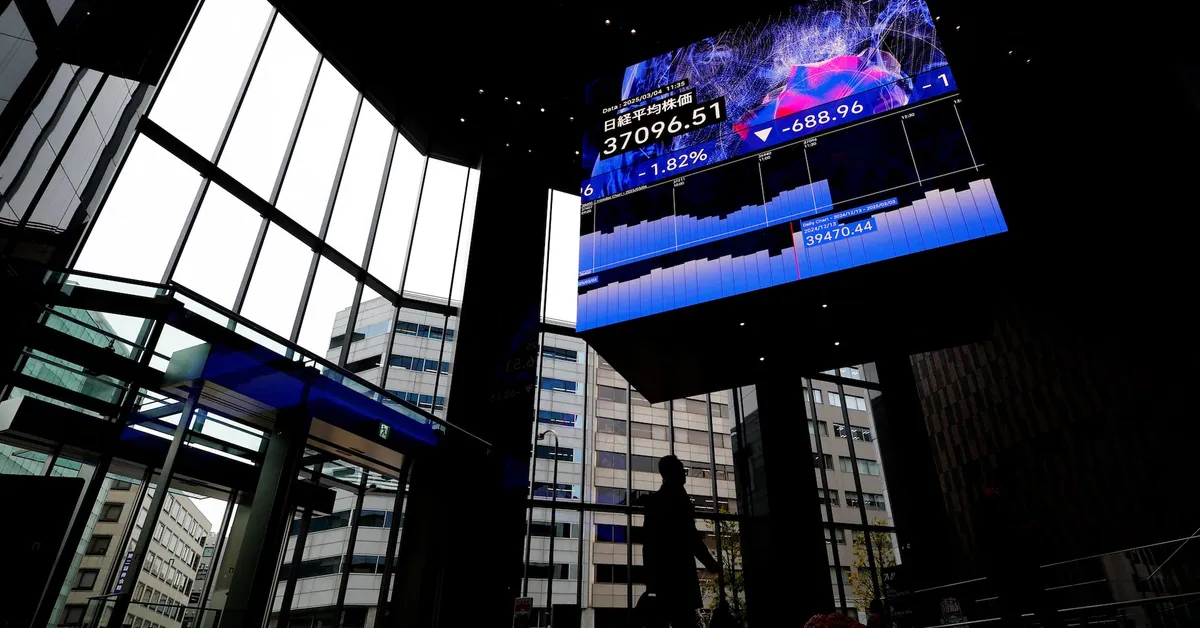
On March 21, 2023, Asian stocks experienced a significant drop, marking a downbeat end to the week. This decline is attributed to intensifying geopolitical worries and concerns regarding U.S. tariffs, which have curbed investors' appetite for risk. Consequently, safe-haven assets like gold remained near record highs, indicating a shift in investor sentiment towards more secure investments.
The negative sentiment observed in Asia seems poised to extend into Europe, with Pan-European STOXX 50 futures and Germany's DAX futures both falling by 0.5%. Additionally, futures for the S&P 500 and Nasdaq also inched lower, reflecting a broader trend of market unease.
This week has been marked by a series of central bank meetings around the globe, with policymakers adopting a cautious tone. The U.S. Federal Reserve, Bank of Japan, and Bank of England all opted to keep interest rates steady, highlighting the unsettled economic outlook. This uncertainty is largely driven by escalating trade tensions initiated by the Trump administration, particularly with the announcement of new reciprocal tariff rates set to take effect on April 2.
Recent reports of Israeli airstrikes on Gaza and a significant explosion resulting from a Ukrainian drone attack on a Russian military airfield serve as stark reminders of the rising geopolitical tensions. These events are pushing investors towards safe-haven assets as they seek to mitigate risk in a volatile market environment. Charu Chanana, chief investment strategist at Saxo, noted that the focus has shifted back to growth concerns and tariff risks, which are likely to perpetuate market volatility.
As uncertainty grows, the U.S. dollar has found support, with the dollar index steady at 104.09 after a 0.36% increase on Thursday. Despite a drop to a five-month low earlier this week, the index remains bolstered by the Fed's cautious stance regarding rate cuts. Meanwhile, the Japanese yen weakened against the dollar, trading at 149.50, although it has appreciated by 5% this year due to expectations of a rate hike by the Bank of Japan in 2025.
Recent data reveals that Japan's core inflation hit 3.0% in February, with an index excluding fuel effects rising at the fastest rate in nearly a year. This indicates broadening price pressures that reinforce market expectations for further interest rate hikes. Min Joo Kang, a senior economist at ING, commented on the risks posed by U.S. trade policy but suggested that if trade tensions do not escalate beyond current expectations, they may not significantly impact the BOJ's rate hike plans.
In commodities, oil prices experienced a rise on Friday, positioning themselves for their strongest weekly performance since January. Brent crude futures climbed by 0.36%, while U.S. West Texas Intermediate crude futures saw an increase of 0.4%, both on track for a 2% gain for the week. On the other hand, gold prices eased by 0.46% to $3,030 as investors took profits after reaching record highs in the previous session. Nevertheless, gold is still on track for its third consecutive week of gains, buoyed by ongoing safe-haven demand.
As the global economic landscape continues to evolve under the pressures of geopolitical conflicts and trade tensions, investors are advised to remain vigilant and informed about the potential impacts on market dynamics.